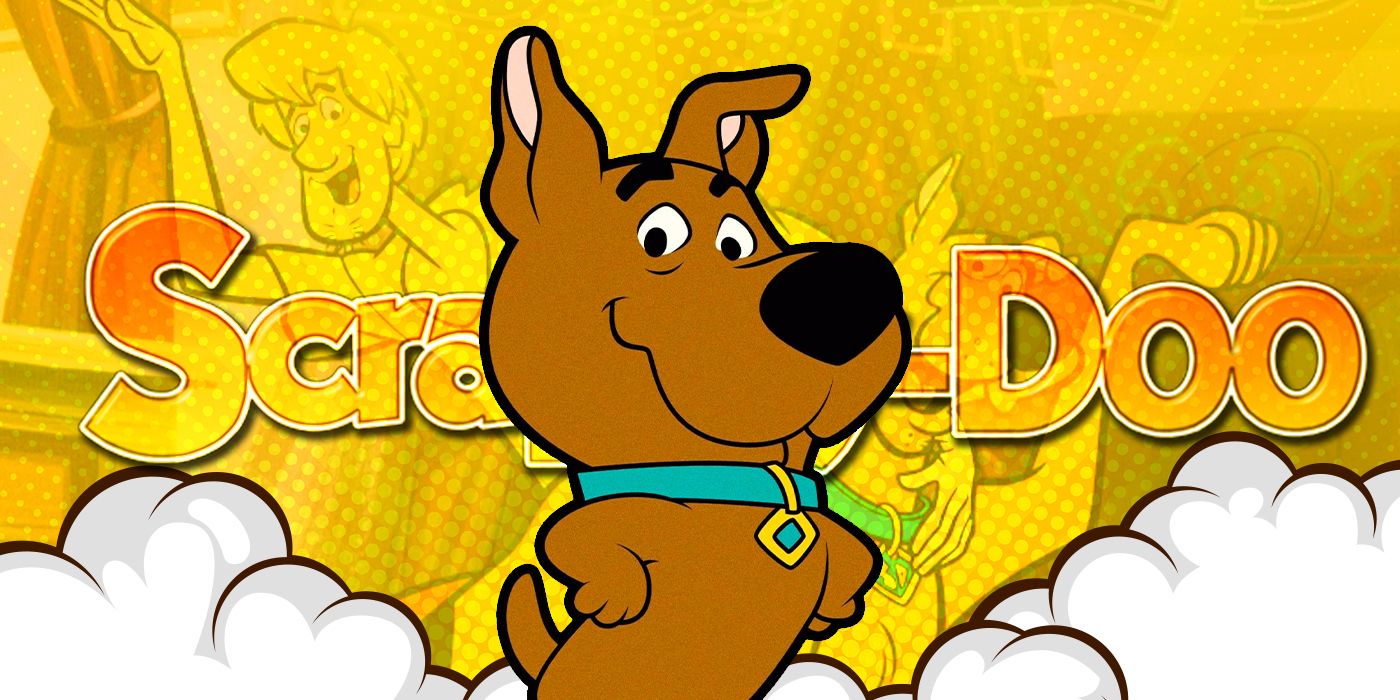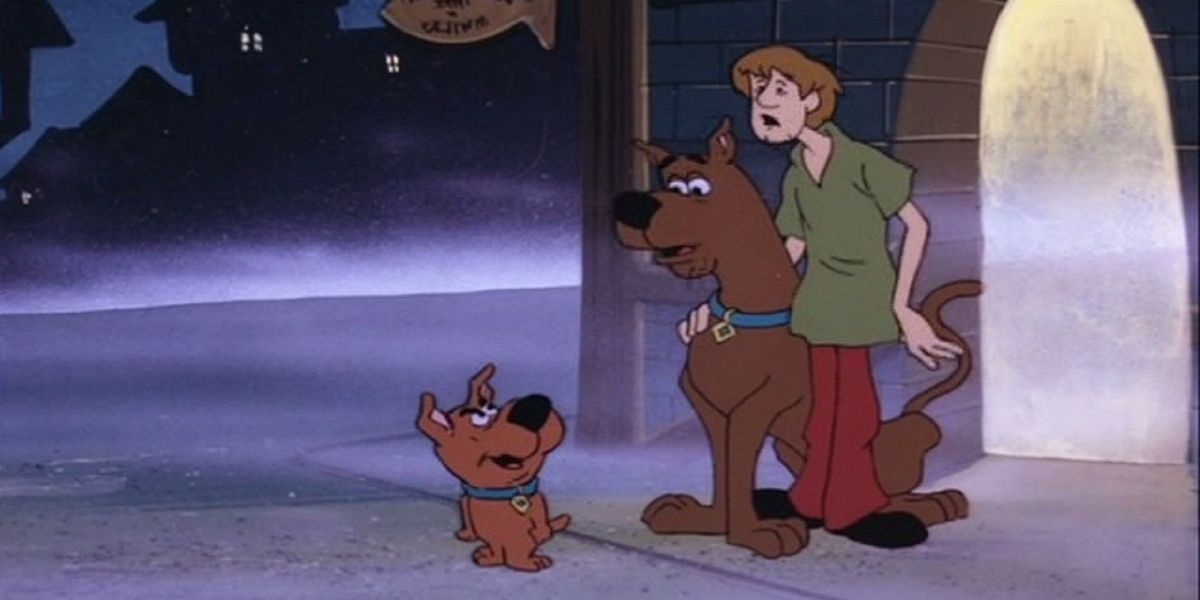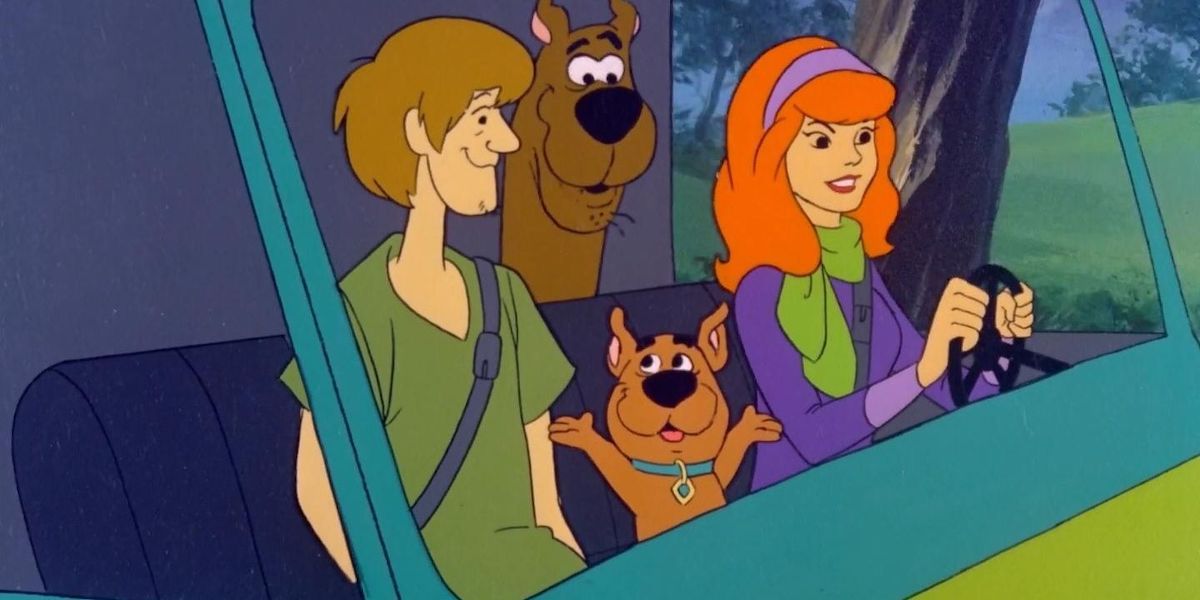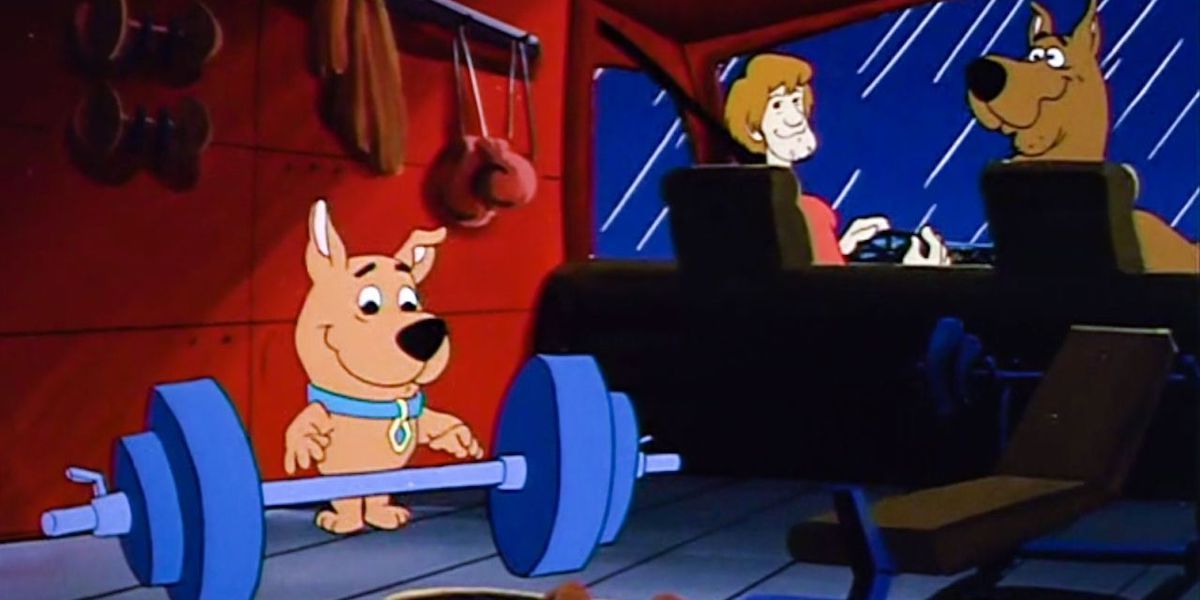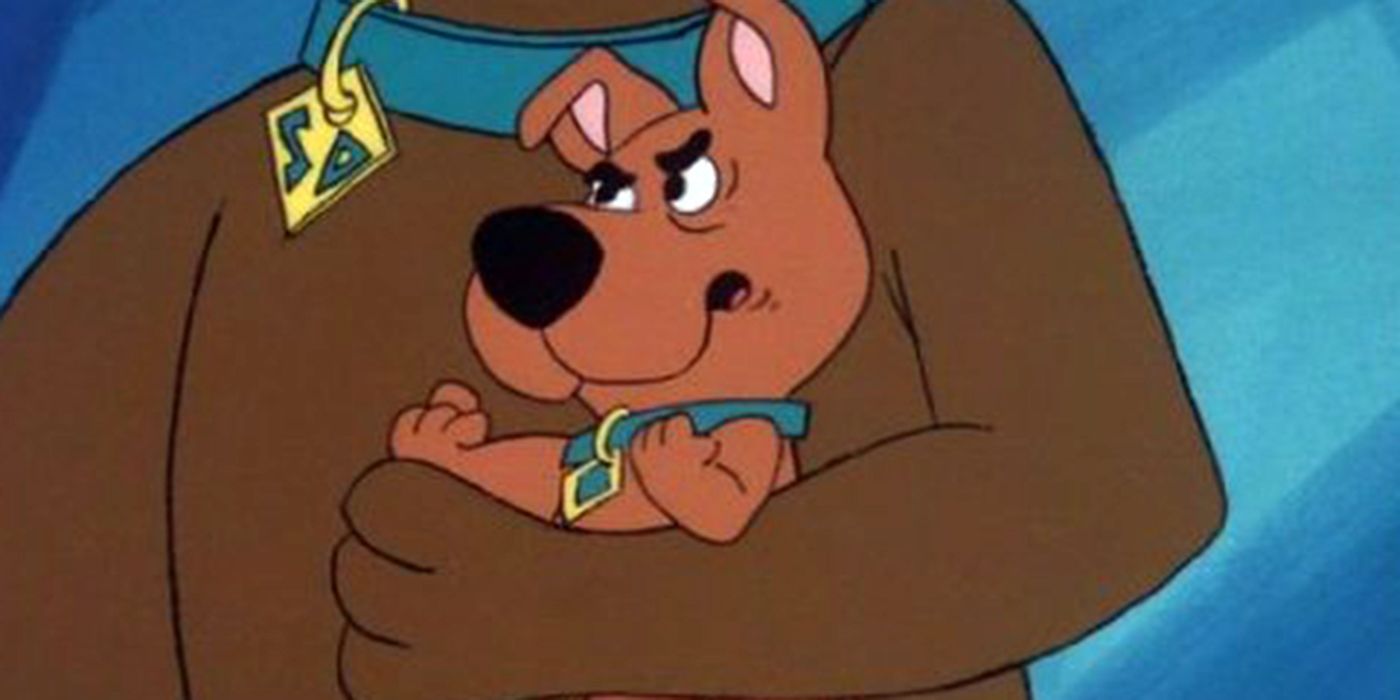There are a lot of things I don’t get about the Scooby-Doo franchise. I don’t get why Velma, confident and affable in the first series, has since been made a cynical, deadpan nerd with self-esteem issues. I don’t get why Scooby and Shaggy have been rendered peripheral characters in so many of their own shows, irrelevant to the plot at best and an active hindrance to the gang at worst. I don’t get why Scooby-Doo is a franchise at all; the formula may be entertaining, but there are only so many times I’m prepared to sit through it, even with the occasional real monster and design update. But most of all, I don’t get the ongoing disdain aimed at one pint-sized nephew named Scrappy Dappy Doo.
He’s been put through the wringer, Scrappy has. He was unceremoniously dropped from the franchise at the end of the 1980s and hasn’t been allowed back into the TV series since. Those few references made to him on the various shows of recent years are derogatory. The ill-advised 2002 live-action film made him into a maniacal villain. Harvey Birdman, Attorney at Law enjoyed subjecting him to humiliating cameos, often as a corpse. Even Cartoon Network got its kicks in through one of their bumpers in the early 2000s. And “the Scrappy” has become a popular term for late-addition characters rejected by fans.
Of course, that kind of outrage over a Saturday morning cartoon should always be taken with a giant shaker’s worth of salt, especially in the age of Twitter and YouTube comments sections. It’s a safe bet that such rabid anti-fans have greater volume than they do numbers. Still, Scrappy’s taken shots pretty consistently for the past three decades, so there is something to the negative fan reception. Is he really that bad?
Those Scooby fans who turn their nose up at Scrappy and blame him for bringing the franchise down should know that Scrappy’s the only reason Scooby-Doo survived long enough to reach the age of modern media franchising. In 1979, after three series and a range of gimmicks from celebrity guest stars to dimwit cousin Scrappy-Dum, Scooby-Doo was on its last legs. Repeition was such an issue even then that ABC was talking cancelation. This was untenable to Hanna-Barbera, and they decided that what Scooby-Doo needed was a new star character. Joe Barbera established the basic idea of a little nephew named Scrappy-Doo, animator Iwo Takamoto (probably) prepared a character design, and writer Mark Evanier developed Scrappy’s personality with Looney Tunes star Henry Hawk as a model. Why Henry Hawk? Because the ABC executive who would decide Scooby's fate was allegedly enamored with the classic Looney Tunes and would approve cartoons based on their connections to the classics. Evanier later had cause to doubt the executive's devotion to the Looney Tunes, but he duly took his cues from Henry Hawk and wrote the script for what amounted to an unofficial pilot for Scooby-Doo and Scrappy-Doo. On the strength of that script, the series was picked up.
It was, at the end of the day, the same old story: spooky mysteries ending with a guy in a mask. Only now, there was an irascible puppy that wanted to duke it out with the crooks instead of fleeing from them or solving the mystery. Scrappy’s cries of “Let me at ‘em!” and “puppy power!” (apparently an ad-lib from a rejected voice actor that Barbera took a liking to) sounded relentlessly through every new episode, and the action increasingly focused on the trio of Scooby, Shaggy, and Scrappy. So much focus was given over to them that, come second season, Fred, Daphne, and Velma were written out. Daphne would occasionally rejoin the cast in certain incarnations, but for much of the 1980s, Scooby-Doo was a three-man team.
Scrappy did the job he was made for; ABC didn’t cancel, and ratings improved. The writers (at least some of them) even enjoyed working with the character. But Scrappy came in for trouble before he ever made it to the air. Finding the right voice was a torturous process requiring multiple recordings of the entire episode, and a money and personality dispute ended up costing Scrappy his first performer after just one season (Don Messick, Scooby's VA, ultimately got the part for most of Scrappy's run). According to Evanier, Standards and Practices found the little guy “too independent” and wanted im to conform more with his uncle Scooby. Evanier successfully refuted their demands in a conference, but Hanna-Barbera would later cave and have another writer water Scrappy down. And his initial run of episodes was given out to a less than stellar animation house.
Evanier eventually concluded that Scrappy wasn’t a good addition to the cast long-term. His ability to speak comprehensibly compared to Scooby “tore the already-frail ‘reality’” in his assessment. I doubt was the issue. For all the things I questioned about Scooby-Doo even as a kid, the two talking dogs having different speech patterns never crossed my mind, and I've never seen a Scrappy hater bring it up. The coincidental decision to have real supernatural beings during the Scrappy years was a more significant shake-up to the formula, one that some found repulsive (a later effort would reduce the Skeptical Inquirer to tears). And the fact that this new character burst onto the scene with equal billing on the title – while three core cast members were dumped – rubbed some fans the wrong way (and helped to inspire Poochie on The Simpsons years later).
But as originally conceived, Scooby-Doo was a series with five lead characters and two personalities to split among them. Velma had a catchphrase and a running gag with her glasses, but Fred and Daphne had virtually no distinguishing character traits. Daphne’s time away from the series didn’t gain her any personality whenever she did return for a season or two, and the focus remained on Shaggy and the dogs in any case. Whatever else you may say about him, Scrappy has a definite personality, one that could affect the course of a story. Which wasn’t always a positive; rewatching episodes of Scooby-Doo and Scrappy-Doo for this article, I will readily concede that Scrappy is an obnoxious little tyke, aggressively shoved into every possible scene with catchphrases that are beaten to death – in his first season.
But Scrappy evolved with time, much more rapidly than the original cast had. One season and a cast change later, he had mellowed considerably, becoming more of a wide-eyed and eager young sleuth than a would-be brawler. His blind, delusional hero-worship of his uncle Scooby gave way to a more realistic (but still affectionate) opinion. The shrinking cast would allow him to evolve further. Bland as they were, Fred and Velma did put clues together and solve mysteries, and along with Daphne, they delivered much of the exposition and asked necessary questions. With their departure, and with Shaggy and Scooby still played as comic characters, Scrappy was left to take up the slack, in effect becoming the straight man of the franchise – a younger, more lively, and active straight man who found the idea of ghosts and goblins exciting.
This was most apparent in what could be called the Red Shirt Shaggy era. This period of the franchise began with The 13 Ghosts of Scooby-Doo. Daphne (and Flim Flam, a far more obnoxious sidekick than Scrappy ever was) were still along for the ride, but when The 13 Ghosts finished its very brief run, Scooby-Doo persisted as a series of TV movies with Scooby, Scrappy, and a palette-swapped Shaggy mixed up in various supernatural situations. His red shirt seemed to give Shaggy a little more sense of responsibility, and as the only human in the main cast, he almost had to become more of a detective and straight man. But it was Scrappy who embraced whatever adventure the gang became entangled in and pursued the mysteries and monstrosities involved – and by this point, he did it without trying to “splat” anyone or evoke “puppy power.”
Were these TV movies any good? The 80s as a whole aren’t exactly the most beloved era of Scooby-Doo, or animated network television as a whole for that matter, and a padded, meandering film like Scooby-Doo Meets the Boo Brothers isn’t going to win any Emmys. But Scooby-Doo is a franchise for kids, and as a kid, I enjoyed Scrappy and the Red Shirt Shaggy era as much as I enjoyed any other Scooby series – that is to say, well enough. Looking back as an adult, I don’t see a case for Scrappy having brought the franchise to its knees. Hanna-Barbera’s TV animation never had good production value, and the quality of the writing (never exactly Pulitzer-worthy) started to slip well before Scrappy turned up. If Scrappy was pushed too aggressively when he first appeared – and was a bit too much of a twerp – he became a more tenable character with time, and a more interesting straight man than the alternative.
Fred, Daphne, and Velma would eventually be back, to stay. More recent series and films have tried to graft personalities on to them, often at the expense of any meaningful role for Shaggy and Scooby in the various films and shows of the modern era. These efforts have been moderately successful, at times, but compared to Scrappy's decade-long stint, he still seems the more solid character. A pared-down cast featuring him, Shaggy, and Scooby let the latter duo more effectively be the true stars of what is supposed to be their show. And for how uneven they were, there was a sense of experimentation with the different ghostly encounters of the Red Shirt Shaggy period that’s fun to watch, and at least offers some relief from the otherwise interminable “man in mask” formula. So, for all these reasons – no, Scrappy wasn’t so bad. And if the franchise is to continue—which all signs point to, however baffling I find it—then it might be worth giving Scoob's nephew his own reintroduction.

